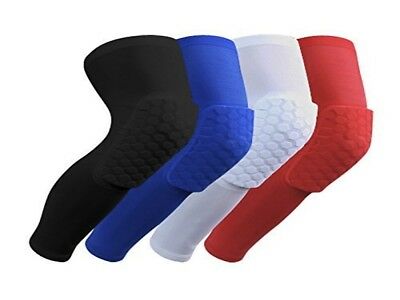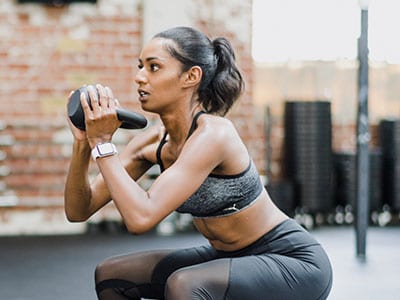Introduction
Athletes and even regular people put their bodies under a lot of strain when they exercise and complete daily activities. The body is comprised of numerous muscles, bones, veins, and other important pieces that all need to work together to function properly. Because there are so many delicate assets, people can easily injure themselves when they’re not careful. The most easy to damage points are the joints, where muscles and bones connect to form flexible sections that bend and move. To help prevent injuries, more and more individuals now rely on sleeves and braces for the elbows and knees. But just what do knee sleeves do?
The Difference Between Knee Sleeves and Braces

Before wearing knee sleeves you need to know that they are different from braces. A knee brace is designed to support the muscles of the leg and afford the entire joint extra protection. They tend to be stiffer than sleeves and are usually prescribed by doctors. Knee braces are primarily worn by people who are recovering from injuries or surgery on the joint.
A knee sleeve, on the other hand, is basically a piece of reinforced fabric that can be slipped over the foot and leg to sit on the knee. It offers a variety of benefits but does not provide extra protection for the muscles and bones of the knee. Instead, it focuses on providing minimal support, compression, and warmth to its wearer during physical activity and even during day to day use.
Minimal Support
Sometimes people need a little extra support in their joints, especially the knees. A sleeve provides some muscle support and protection by holding the muscles in place. This can help prevent injuries like torn muscles, which can easily end anyone’s athletic career. Many people wear sleeves while running, weightlifting, and playing sports like baseball, basketball, soccer, and tennis.
However, it’s important to note that knee sleeves do not provide as much support as a regular brace, which is much more suitable for individuals who are recovering from injuries or surgery. The knee sleeve should also not be relied upon to if someone already suffers from an injury or recurring joint pain. Instead, you should invest in a brace.
Compression

Compression is when the sleeve forms a tight seal around the leg and pushes or squeezes the muscles up against the bones. Compression provides several valuable services such as improving blood flow through the veins and reducing pain from shocked muscles and rapid movement. Many athletes swear by compression merchandise and even wear entire outfits made of the materials.
Some knee sleeves possess varying amounts of compression, so you might need to try on a couple of different varieties before settling on a single sleeve. Not all sleeves include compression, so it’s important to check any product before purchasing it.
Warmth
Another bonus of wearing a knee sleeve is the warmth it gives to the joint, as well as to the leg in general. Cold joints tend to be stiffer and unable to bend and move as well as their warm counterparts – this is part of the reason why doctors and athletic specialists recommend individuals “warm up” and “limber up” through stretches and moderate activity before engaging in harder activities. Many people, especially cross country runners and others who play or exercise outside, also appreciate having an extra layer of protection from the cold.
Naturally, knee sleeves have a variety of warmth depending on the materials they are made of. Neoprene tends to be one of the warmest fabrics because it is synthetic, although athletes swear it is one of the most breathable materials. Cloth braces tend to be the coolest, and also tend to offer the least compression.
When to Wear Knee Sleeves

Although some people swear by knee sleeves and wear them all the time, there are moments when the sleeves are better to have. You should wear knee sleeves if you’re going to be doing any athletic activity to get the full benefits, starting from stretches and ending when you finish your cooldown. Most weightlifters also recommend wearing the sleeves during the entire workout.
While some people do wear knee sleeves all day, you need to be careful if you do this. Wearing compression clothing all the time has been shown to produce negative side effects because the muscles and veins are constantly being squeezed.
The Types of Knee Sleeves
There are a couple of different options you can choose from when buying knee sleeves. They are cloth sleeves, Neoprene sleeves, and knee wraps. Cloth sleeves are the loosest on the list and are designed to provide a modicum of compression and some warmth to the joint while including little support. A Neoprene sleeve is perhaps the most common and is designed to provide warmth, injury prevention, and some mild compression. Finally, there are knee wraps, which can be adjusted to be as tight or loose as you want. These are typically worn when someone wants to improve their athletic performance.
Conclusion
Wearing a knee sleeve is a great way to improve athletic performance and keep yourself comfortable when doing any sort of physical activity. While many individuals prefer knee sleeves for athletic activities, you can also wear them if your joints are weak and you want some extra compression and warmth throughout the day. Just remember not to wear them all day because they can get a little uncomfortable at that point. Just remember to do some research before purchasing any variety, and see if you can test some out before settling on a make, model, and style.
What’s Next
Now that you know what knee sleeves do, you can turn your attention to getting answers to the other burning questions in your mind. If you’re interested in more answers, tips, tricks, and more, don’t miss our essential advice for beginners. We post informative and entertaining information about every subject a baller needs to know about. We upload original content on a regular basis tailored to our audience’s needs.
